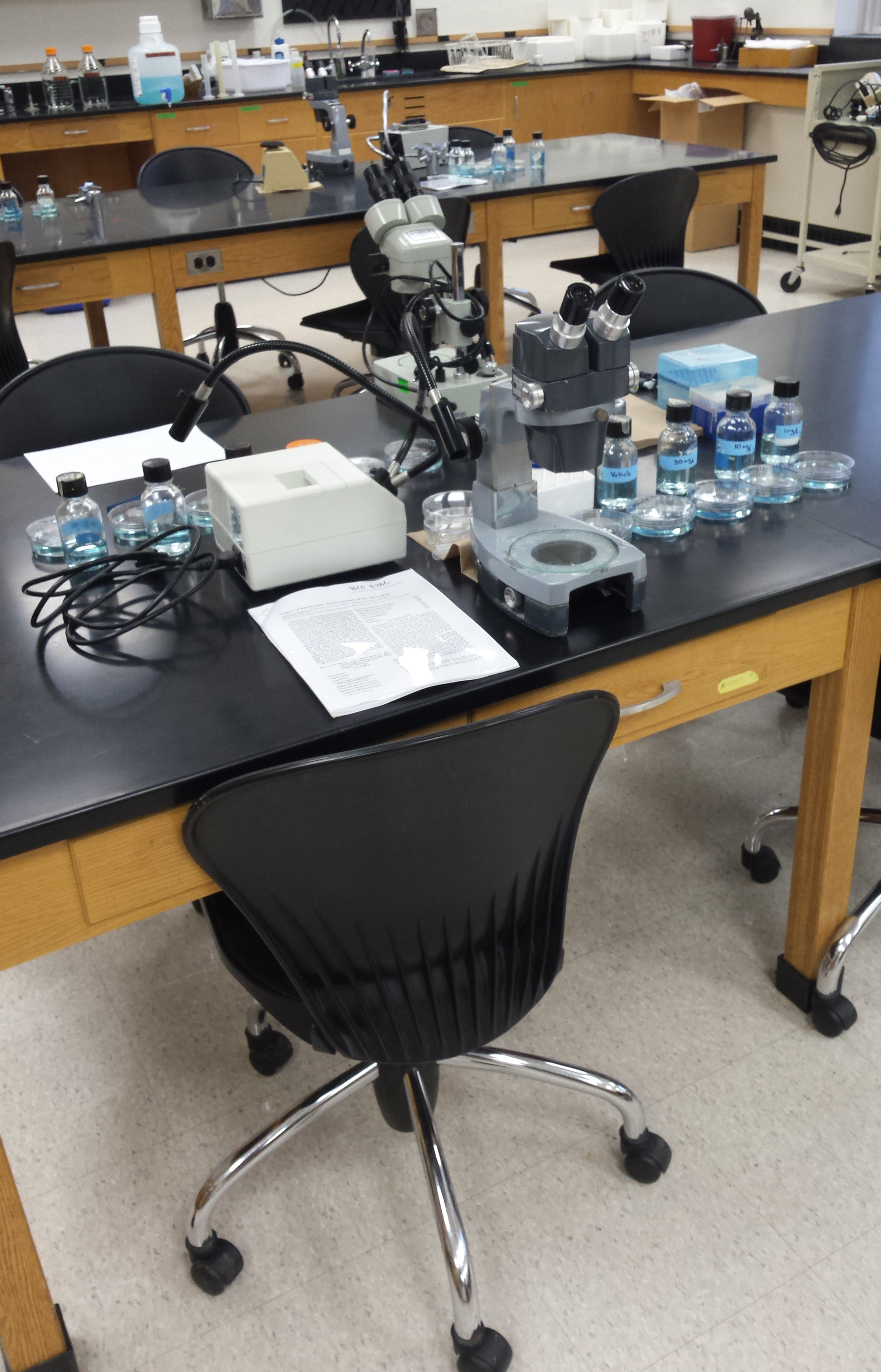
Important learning outcomes for biology students include the ability to develop experiments as well as pull together concepts across their coursework. The field of developmental biology, especially environmental influences on development (eco-devo), provides a framework for connecting concepts including tissue dynamics, cell signaling, and physiology. An eco-devo framework also provides opportunities for experiments that are relevant to student interests and/or experiences by encompassing topics such as the impact of environmental contamination or maternal health on development. Here we present a guided course-based undergraduate research experience (CURE) for students to work with zebrafish embryos as a foundation for the design and execution of their own novel research project. The guided experiment that is performed first in this lesson explores how the weed killer atrazine might affect development of zebrafish, even though atrazine would not be expected to impact animals. The student-developed independent experiment is planned during the guided experiment and then performed in subsequent weeks by students in the second part of this lesson. The independent experiment allows students to investigate a research question related to their own interests. These experiments can be modified for a variety of courses depending on the instructor's curriculum, time constraints, and goals for the experiment. Students are particularly engaged in the lesson because it enables them to investigate their ideas and interests.